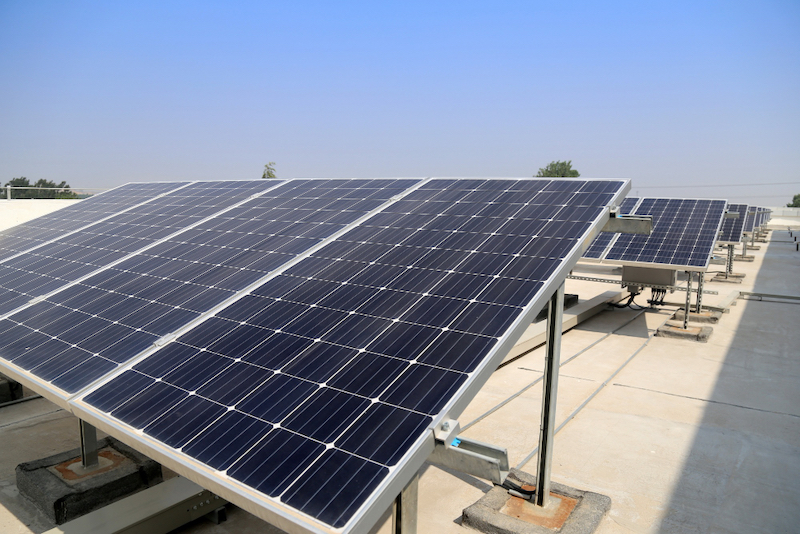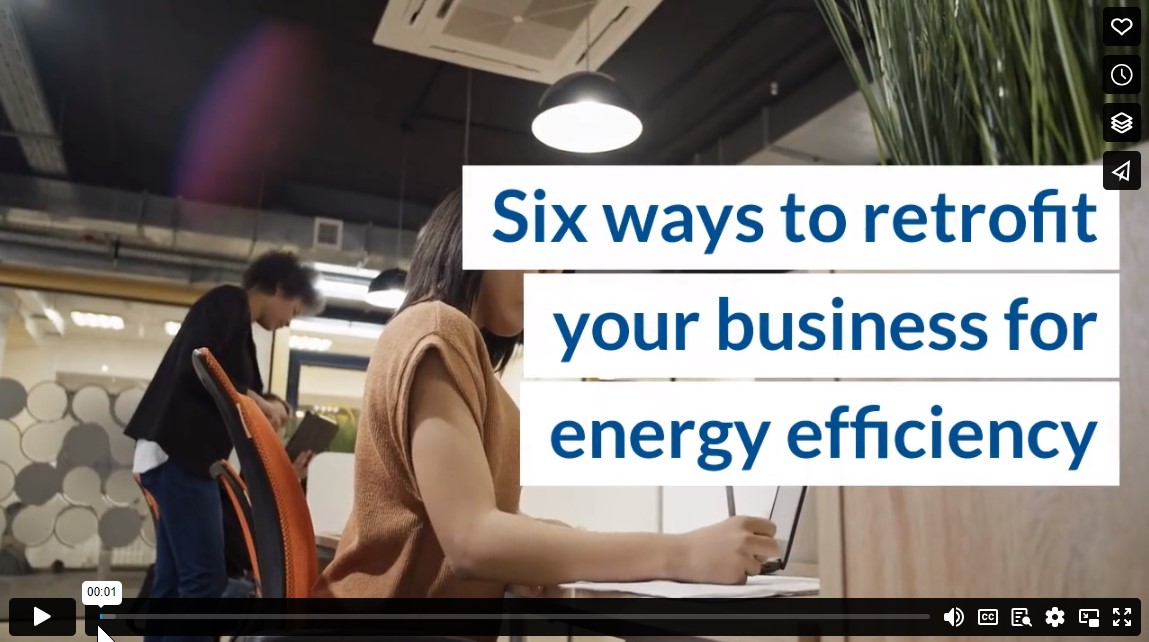
With energy bills getting harder to manage and budget for, more business leaders think about ways to use less energy. Prioritizing your company’s energy efficiency to save on energy costs also leads to becoming more environmentally sustainable, so looking into ways to optimize and reduce energy consumption is the best first step you can take. That’s where retrofitting comes in. Improving your commercial building to make it more energy efficient is cheaper, faster, and less hassle. Here are six ways to start retrofitting your building and begin seeing improvements to your company’s energy costs and environmental impact:
1. Upgrade your HVAC (Heating, Ventilation, and Air Conditioning)
In business, it would be unwise to set up processes and then let them run forever without evaluating and adjusting. Treat your HVAC the same way you treat your operations: give it the care and attention it deserves, and you’ll see improved performance.
Your HVAC’s motors, fans, pumps, and other parts wear down over time. The system may still function, but it is less efficient. Replacing these parts can bring the equipment back to its original efficiency. An expert heating and cooling repair technician can evaluate whether it’s time to replace these components and whether any additional servicing can improve performance and increase the life of your system.
At some point, it may make sense to consider replacing the significant components of your HVAC, even if the system is still working. For an older system, it may only be a matter of time until it fails, which can dramatically affect your operations. Getting ahead of aging equipment and replacing parts before a failure can prevent downtime, damage to other systems and equipment, frustration, and last-minute expenses. Preemptive replacement can bring a new, energy-efficient system online sooner, improving your carbon footprint and the heating and cooling of your building.
2. Optimize what you have
Making changes to the systems and processes you already have is a great way to optimize. In most cases, it costs nothing, and you see an immediate difference in your energy consumption. Consider the following questions:
- Are your heating and cooling temperatures set appropriately?
- Would adjusting them by a degree or two keep the spaces comfortable for your employees and safe for your equipment?
- Can you streamline a part of your assembly or manufacturing so that energy-intensive equipment can run less?
Examine all of your energy-intensive equipment and see if there are ways to optimize the processes that use it so that it can run less often or be more effective when operating.
3. Involve your staff
Involving your employees in energy efficiency is another free suggestion that can have immediate and long-term benefits for your conservation efforts. Reach out to your staff about your energy goals. Create a team to identify efficiency, productivity, and waste-reduction opportunities.
You may see your business from the 20,000 foot level. Your employees are the ones who see that the coffee maker continues to heat the pot all day even though no one drinks any of it after noon unless they make a fresh pot. They see that the lights in the conference room are often on even when no one is in there. They may have suggestions for more significant changes, too.
With their input, you can institute a policy–or purchase a smart plug–to turn off the coffee pot at 11 a.m. and purchase a motion-sensitive light for the conference room. Or you may find their suggestions lead you to upgrade a piece of equipment to something better suited for the specific needs of your business and less wasteful when it comes to your energy use.
4. Get smart
Everyday devices made intelligent with internet or computing capabilities can be a key component in your electricity management strategy. Installing smart thermostats ensures you aren’t using energy to heat or cool a space no one is using. When rooms aren’t occupied, they aren’t kept at temperatures chosen for human comfort. You need to ensure your plumbing doesn’t freeze and your after-hours machines don’t overheat. Beyond that, your HVAC shouldn’t be working outside of business hours. Use your smart thermostat to ensure your system only runs when you need it.
When shopping for a smart thermostat, choose one with enough granularity to suit your needs. If you want to be able to set specific settings for specific days, for example, make sure it has that capacity rather than simply offering “weekdays” and “weekends.”
Smart upgrades don’t stop with your thermostat. You can use smart plugs to operate lights and other equipment. There’s no need for the computers or copier to stay powered on if the offices are closed. Rather than relying on each employee to remember to power down their equipment at the end of the day, automate it using smart plugs that shut down vampire equipment that continues to suck energy during off-hours.
5. Upgrade lighting
This inexpensive retrofit will produce immediate energy savings. If you still have incandescent or fluorescent bulbs or fixtures that require them, switch to LEDs (light-emitting diodes). You will use less energy, and you won’t have to replace bulbs as often. LEDs last much longer than traditional bulbs, decreasing your long-term lighting costs. They also produce light that is more comfortable for your employees. Upgrading your lighting is an easy change you can handle in-house and will lead to meaningful energy-efficiency improvements.
6. Generate your own energy
All of our suggestions until now have involved finding ways to use less energy. Retrofitting your company’s building with energy-generating equipment helps you buy less energy and use power you know is generated sustainably. Installing solar, wind, hydro, or geothermal energy generation on-site won’t help you use less power, but it will lower energy costs and decrease your carbon footprint, in addition to the other benefits of on-site energy generation.
If you need help understanding how on-site generation will work with your existing energy procurement contract, commercial energy consultants can help you evaluate your options.
Think of retrofitting your existing spaces as part of the “reduce, reuse, and recycle” process. Rather than doing away with your current building and moving to a new, more energy-efficient one, you can make what you already have better fit your needs. Retrofitting your existing spaces and equipment saves you the expense and stress of moving while still making your operations more sustainable and energy efficient.
Video
Infographic
To reduce energy expenses, many businesses are retrofitting their commercial buildings to make them more energy efficient. Find out in this infographic the six ways to get started and make a positive impact on your company’s bills and the environment.

Others articles you might like
A guide to understanding how net metering saves you money
When net metering was first introduced in Idaho and Arizona back in the 1980s, it was a game-changer in the renewable energy landscape. The ...
25 July 20247 Factors to Consider When Choosing an Energy Provider for Your Business
From ski lodges and farming operations to retail stores and manufacturing companies, energy costs are a significant line item on your profit...
20 June 2024Understanding the differences: Residential vs commercial energy contracts
Energy is essential to the operation of both businesses and residential homes throughout Canada and the rest of the world. But, there are ma...
4 June 2024




